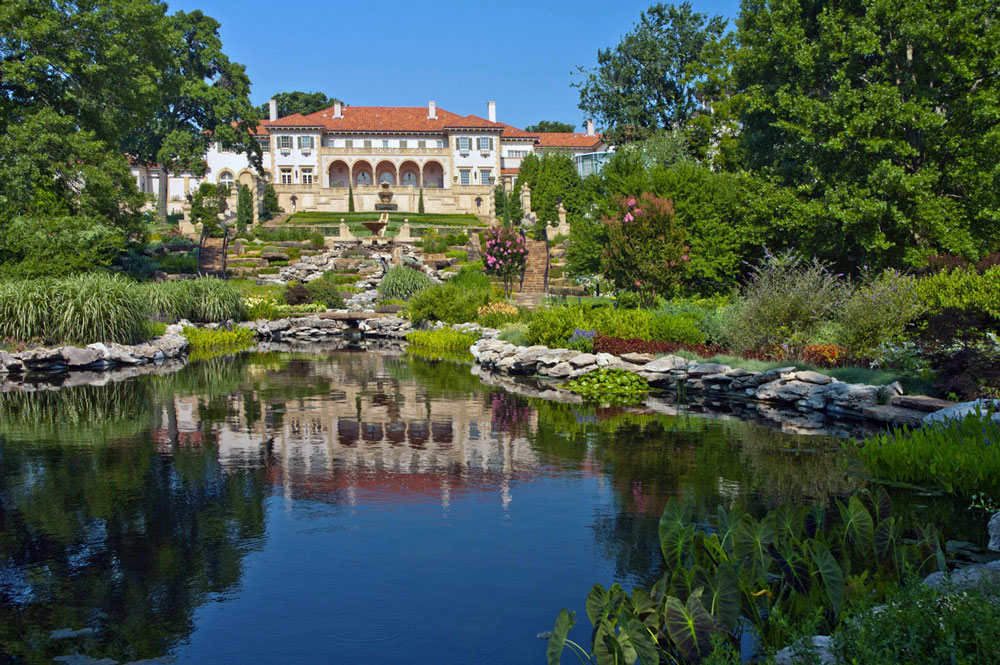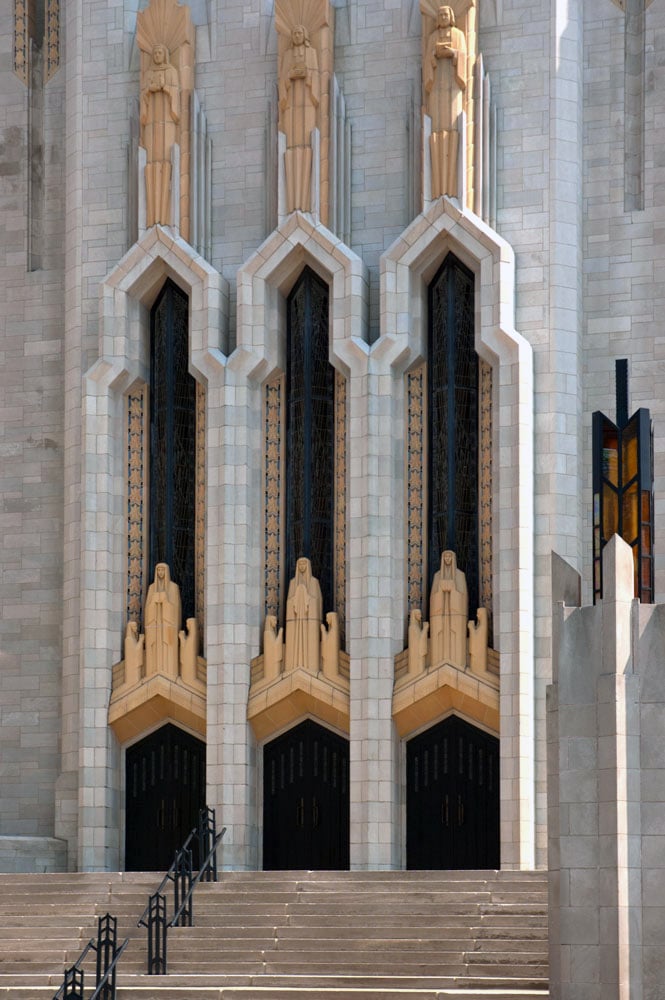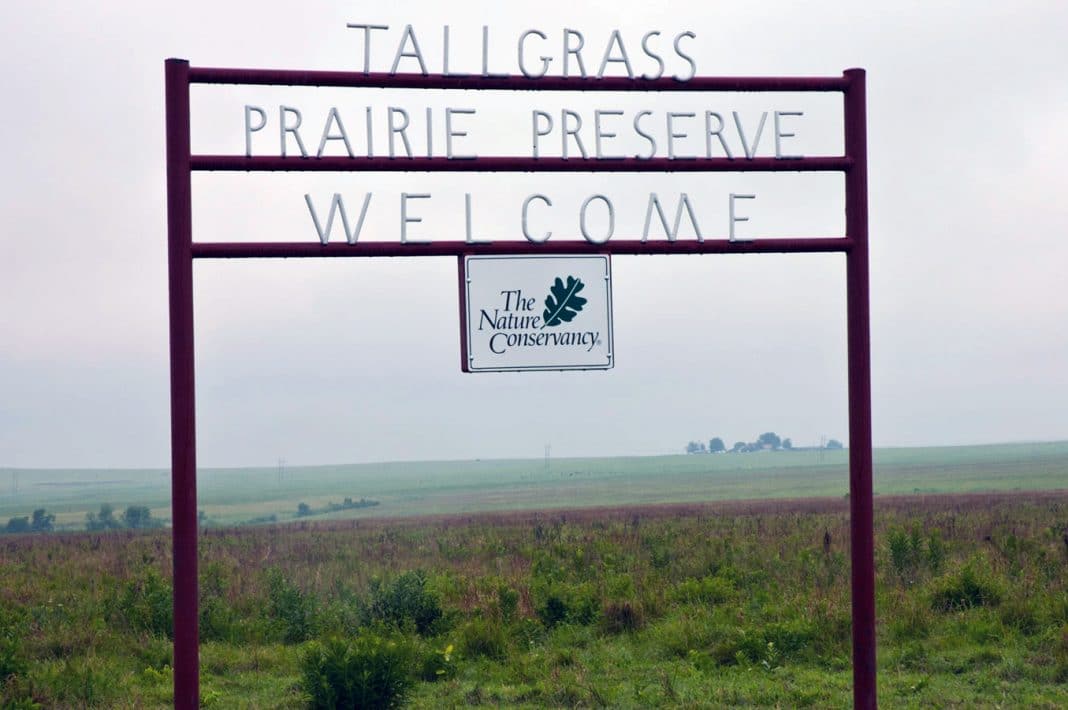Located in America’s Heartland, the area around Tulsa, Oklahoma, offers an abundance of Native American history, plenty of outdoor recreation and a downtown with one of the most extensive collections of Art Deco architecture in the nation
“Pinch me,” I said to my husband, Richard, “I’m not sure if I’m awake or lost in a dream.” The soft notes of a Native American flute filled the cab of our 4WD motorhome as we drove through a ghostly landscape of swirling mist. We’d encountered no other traffic in the 5 miles or so since leaving our campsite in northeastern Oklahoma’s beautiful Osage Hills State Park, a few miles west of Bartlesville and about 60 miles northwest of Tulsa. The fog created an illusion that we were in an alternate reality, and the local Native American myths and legends we’d been reading added to our otherworldly experience.
Tracking the Tallgrass
Entering the little town of Pawhuska, capital of the Osage Nation and also gateway to the Tallgrass Prairie Preserve, we turned north in the middle of town and drove out to the preserve located on the Osage Reservation. Open from dawn to dusk, the preserve’s 39,650 acres is the largest protected area of tallgrass prairie remaining on earth. Ardently protected by a group of people who recognize the importance of preserving as much of this prairie as possible, it is owned and managed by The Nature Conservancy. Admission is free, but donations are accepted.
Not many people find their way out to the Tallgrass Prairie; a place where scientists tell us is close to being the most complex and balanced ecosystem in the world. The goal here is to protect the prairie – not to promote tourism, but a small visitor center, staffed by volunteers, welcomes you, and in future years, when the preservation work is accomplished to their satisfaction, The Nature Conservancy may increase its focus on attracting the public.
We were too early to explore the visitor center, which opens at 10 a.m., so we began our visit with the 15-mile-loop drive through the bison unit, home to more than 2,500 of the great shaggy beasts known as buffalo in Western lore. The fog lingered, but the animals were grazing close to the road, oblivious to the many oil wells in the surrounding hills pumping liquid gold from deep below. Fortunately for the Osage, they retained the mineral rights to this land when they sold it to The Nature Conservancy.
The bison herd is carefully managed, with each animal wearing an ear-tag responder that can be read by holding a wand near its head and reading the data on a portable computer. There was a time during the 18th century when 30 million bison grazed the vast tallgrass prairie. But after being decimated to less than 1,000 head, some forward-thinking ranchers rescued a few, and today there are perhaps 350,000 throughout the country. The animals paid no attention as we stopped frequently to photograph them. Occasionally we saw signs listing the three most important rules to follow while with the bison. Rule No. 1: STAY IN YOUR CAR! Rule No. 2: STAY IN YOUR CAR!! Rule No. 3: STAY IN YOUR CAR!!! They may look big and slow, but bison can move very fast.
We had the preserve all to ourselves, and after driving through the bison unit we took a short self-guided nature walk through the tallgrass where dew drops sparkled along petals of wildflowers and stems of grass that grew in a variety of sizes and shapes. More than 300 species of birds call the Tallgrass Prairie home and many of them flitted and sang along our trail. By the time we finished our walk the sun had burned away the fog and the visitor center offered a cool reprieve. Since we were the only visitors, a very knowledgeable volunteer gave us her full attention filling us in on the human and botanical history of the region. She also told us we absolutely must not miss the Osage Nation Museum in Pawhuska.
Even with her directions, we had some trouble finding it, so we stopped at the Tribal Information Center in town to inquire. Once at the museum, we met several tribal members who gave us a personal tour of the museum with its excellent history of the Osage, then a tour of the Tribal Council Chambers where we met some of the tribe’s governing body and were shown exquisite paintings depicting the Osage Creation Story.
Bartlesville Mansions

Villa Philbrook, built in the Italian Renaissance style, is now used as the Philbrook Museum of Art.
We awoke early the next morning to the sounds of a tremendous thunderstorm that settled into a soft drizzle by the time we were ready to set out on another day’s exploration; this time to Bartlesville to see the historic mansions built by oil barons, Frank Phillips and his brother, Waite, in the early 1900s. Both homes are now museums and a joy to visit. In startling contrast, Frank’s neo-classical mansion is actually a very homey, albeit large family home, while Waite’s home, Villa Philbrook, is a palatial Italian Renaissance villa. In 1938 the Phillips family donated Villa Philbrook to the city of Tulsa for use as an art museum, which now houses one of the finest art collection in the nation.
Intrigued by the stories of these oil men, we wanted to know more, so the next morning we drove back over to Bartlesville and then south on state Route 123, stopping first at the Prairie National Wild Horse Refuge where dozens of wild horses were frolicking right alongside the road. Managed jointly by private enterprise and the Bureau of Land
Management, around 2,000 of these horses find sanctuary here and it is a thrilling sight to see them run with their tails and manes billowing in the wind.
A few miles farther south we arrived at Frank Phillips “little getaway ranch” Woolaroc, which was built in 1925 on 3,700 acres. The massive buildings of logs and native sandstone cut from the property, house one of the most extensive displays of Western culture that we’ve ever seen.
Art Deco Mecca

Boston Avenue Church is one of the finest examples of ecclesiastical Art Deco architecture in the U.S.
Our next destination was Tulsa, and since we wanted to explore and photograph the lovely Art Deco architecture for which the city is famous, we chose a campground that was right in town. With its twisting maze of heavily traveled streets, Tulsa is not a city we’d repeat driving a large motorhome through. An alternate choice would be staying at one of the RV parks on the outskirts of town, or camping at Keystone State Park, to the west of the city, and using a dinghy vehicle in town.
It takes at least a day to explore downtown, maybe more. The Historical Society offers guided walking tours on the last Friday of the month (reservations required), but that was not the time of our visit. So armed with comfortable walking shoes and information garnered from the Internet about the larger-than-life characters who constructed the buildings, we created a tour of own. Our GPS system took us right to the heart of the city bordered by 1st Street to 7th and Cheyenne to Cincinnati. Parking was easy along one of the streets and the shutters of our cameras were firing the minute our shoes hit the pavement.
Beautiful modern high-rises stand alongside older structures built in the early 1900s with most of the Art Deco buildings in the National Register of Historic Places. The mix of styles, old and new, is surprisingly attractive with old buildings adorned with ornate window structures, cupolas, carved gargoyles, clocks and other interesting details, while the newer structures reflect painterly images of the city in great walls of glass. Many buildings welcome exploration of their sumptuous interiors, so go inside and see what’s offered. Lunch is a real treat at the New Atlas Grill, located on the second floor of the historic Atlas Life building, which has been remodeled into a lovely Courtyard by Marriot hotel.
You can download a self-guided walking tour map at http://tulsahistory.org. Steeped in history as well as lovely architecture, Tulsa also offers a host of other historical sites as well as theaters, museums, horse racing and casino gambling and nightlife.
Cherokee Heritage Center
We spent several days enjoying Tulsa’s warm hospitality before moving a few miles east to Tahlequah, capital of the Cherokee Nation. There are many good camping choices around the lakes in this area, which is a paradise for boating and fishing. Our choice was Sequoyah State Park, on the shores of Fort Gibson. The fishing was great and a neighboring camper introduced us to her “perfect” recipe for frying catfish. Sorry, I promised not to share it. Boating on the lakes, fishing and bicycling the backroads was all wonderful, but the highlight of our time in Tahlequah was a day spent at the Cherokee Heritage Center, a very special place devoted to preserving Cherokee history and culture with a museum and historic living village.
Our tour guide, a young Cherokee man with shimmering black hair and an engaging smile, led us through the village explaining that it was representative of the villages his people lived in back in the Appalachian area before first contact with Europeans. A tall, solid fence surrounded the village for defense against threat from mostly large cats, rather than human enemies. He explained that the Cherokee tribes were a matriarchal society and did not go to war unless the women decided to do so. Conflict between tribes was settled, first by negotiation and then by very rough games of stickball, if necessary. As we strolled the grounds we were surrounded by people in native dress demonstrating arrowhead making and the construction of bows, arrows and blowguns, which were used for hunting and not war. We saw how the lodges were built and heated or cooled and watched basket weaving, pottery making and young people playing stickball. In the dim light of the museum, tears streamed down our faces as we listened to the wrenching story of the “Trail of Tears” that brought the Cherokee to Oklahoma.
All too soon it was time to say goodbye to northeastern Oklahoma, though we are putting it at the top of our list of places to revisit.
RV Parks
Cherry Hill Manufactured Home and RV Community
918-446-9342, http://cherryhillmhc.com/rv.htm
Mingo RV Park
918-832-8824, www.mingorvpark.com
Riverside RV Resort and Campground
918-336-6431, www.resortrv.com
For More Information
Cherokee Heritage Center
888-999-6007, www.cherokeeheritage.org
Osage Hills State Park
918-336-5635, www.stateparks.com/osage_hills.html
Osage Nation Museum
www.osagenation-nsn.gov/who-we-are/museum/plan-your-visit
Tulsa Historical Society
918-712-9484, www.tulsahistory.org









